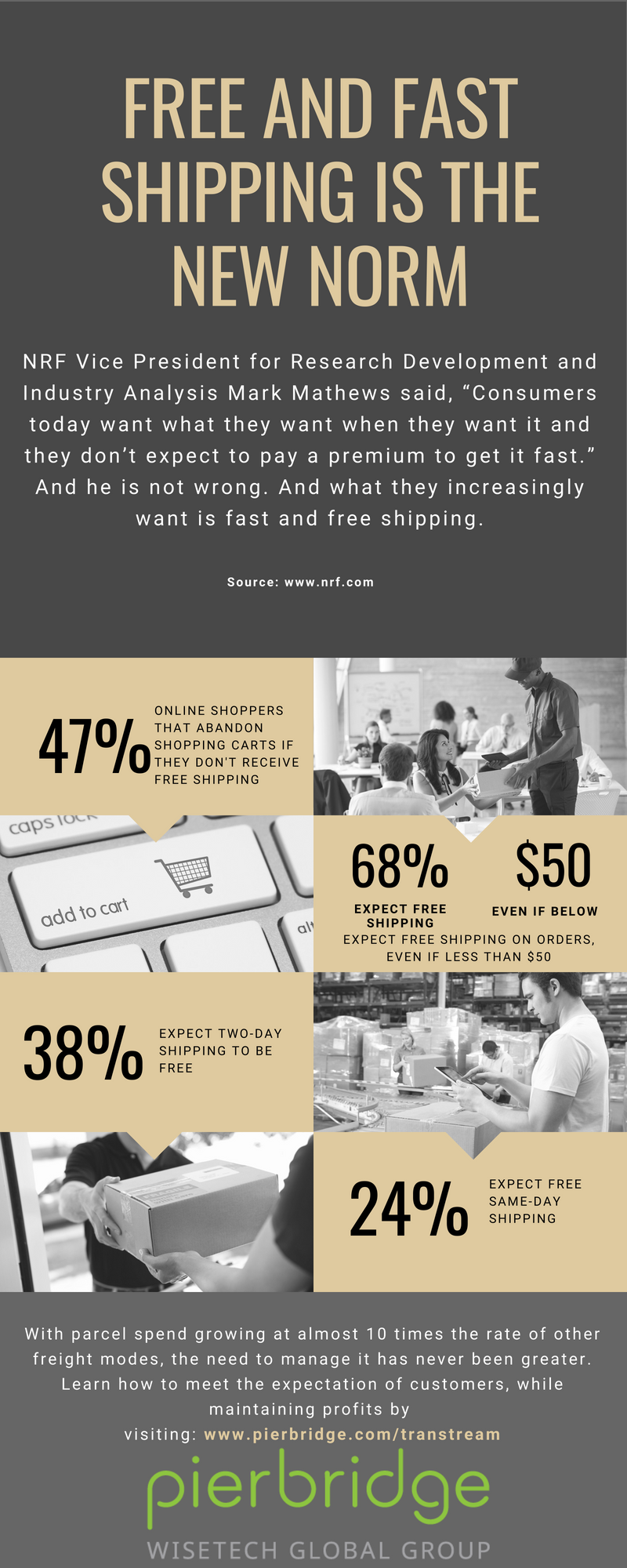Free and fast shipping doesn’t come cheap. But today’s customers expect it. In fact, they expect a lot from their online shopping experience from order through delivery and even returns.
This demand has put a strain on eCommerce players as they try to keep profits in line while keeping customers happy. And as shown in this infographic, customers—and potential customers—are more than willing to click to the next site if they don’t get what they want when they want it from shippers.
It all starts in the cart
Shoppers want to know early on how much they will be paying for shipping, and if you don’t give them that information, odds are they will abandon their cart. In fact, according to statista.com, the online shopping cart abandonment rate per certain industries since Q2 2017 range between 67.4 percent and 83.7 percent, with retail coming in at 76.9 percent. And a lot of that has to do with shipping costs. Consumer View, a quarterly report issued by the National Retail Federation (NRF) that gauges consumer behavior and shopping trends related to stores, online channels, and other topics, said that 47 percent of online shoppers typically abandon their cart if shipping isn’t free.
Not only does cart abandonment cost you in lost sales, but it also costs marketing dollars in an attempt to get those shoppers back to your site before they click “buy” on your competitor’s site. While remarketing ads—ads to those who have already visited your website—have a higher click rate than typical display and search ads, they still incur costs that could be avoided by “closing” the sale on the initial visit.
Give them what they want—at a cost
Customers that don’t abandon their carts due to shipping costs are probably costing you a bit on your bottom line because odds are you are giving them what they want.
According to the report, 38 percent of online shoppers expect two-day shipping to be free while 24 percent expect free same-day shipping, and that number is growing as more retailers, from groceries to big-boxes, are offering same-day delivery in more areas. Of course, offering and competing with that kind of service is costly and can put a serious strain on the resources (financial, time, and logistics) of most eCommerce players, and it makes managing the process and keeping costs in line more important—and tricky—than ever. Add to that the increased costs and regulatory complications of cross-border shipping many e-tailers are using to fuel growth, and keeping up with the service and demands of customers takes a truly multi-carrier and omnichannel approach.
In the end, the key to success in parcel shipping for eCommerce players is the ability to manage a more complex supply chain and shipping logistics to keep costs down and customer service high all while giving shoppers the fast and low-cost (in more cases free) delivery they demand.
